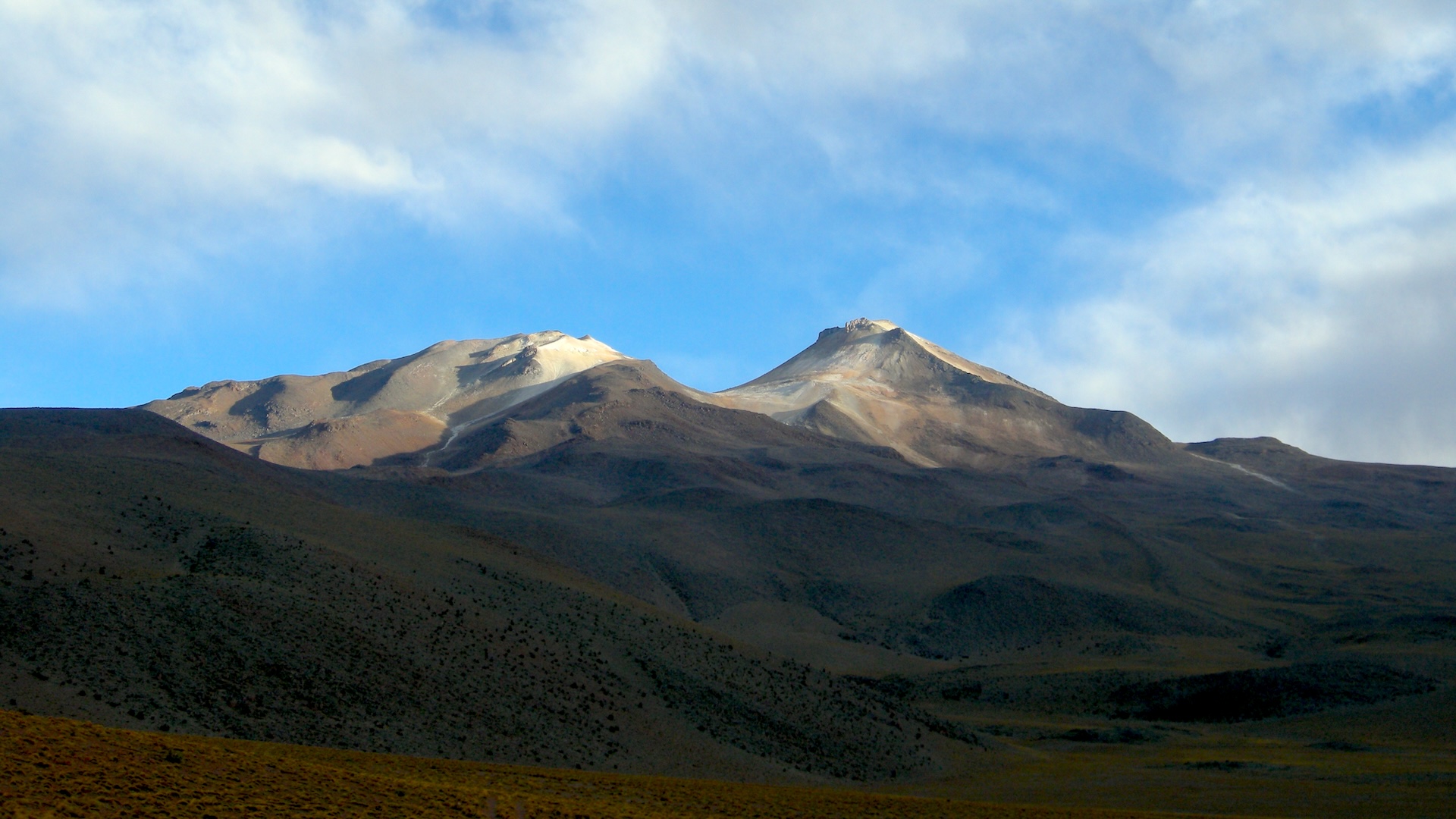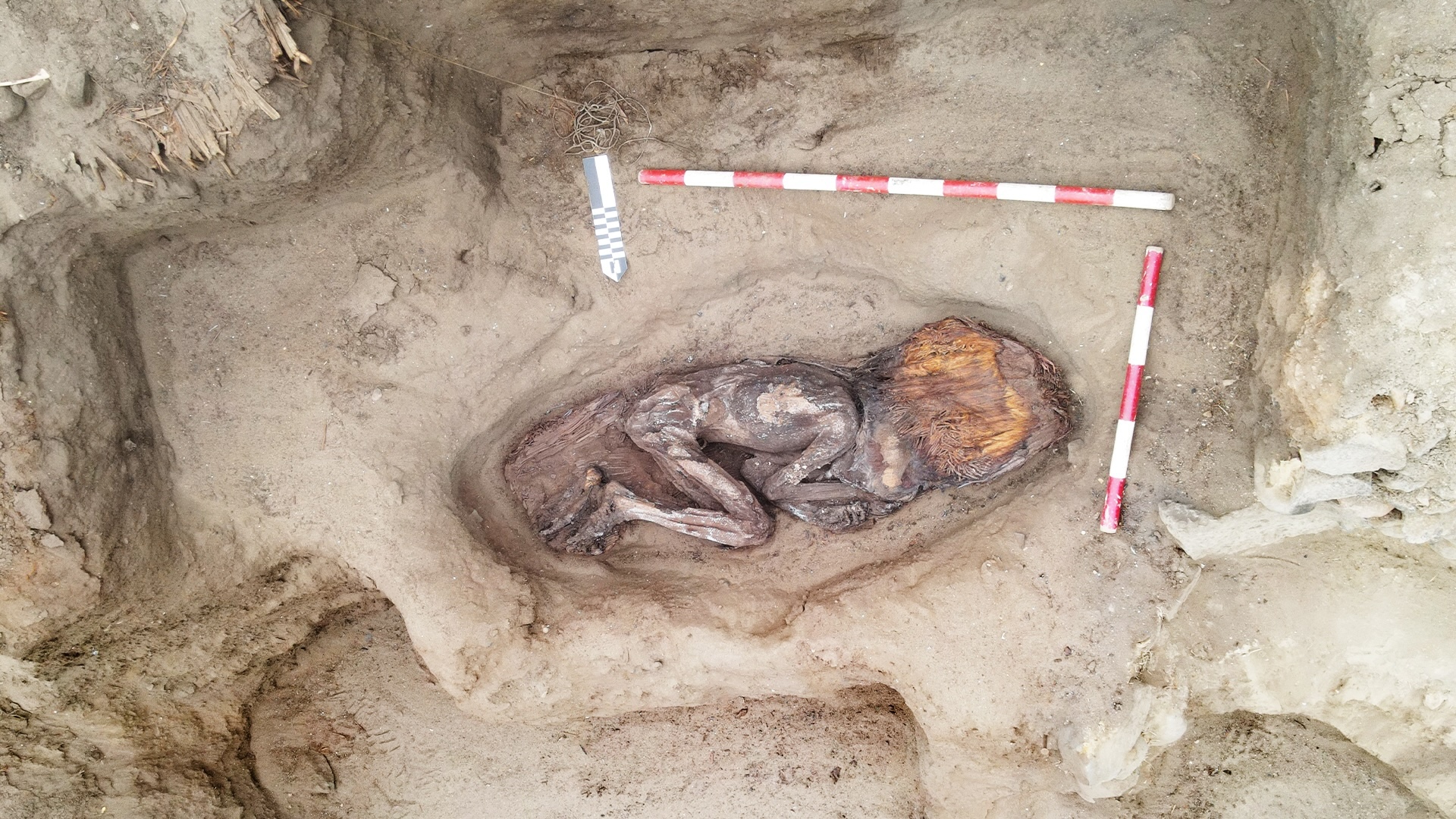Listen to haunting sounds of Earth's magnetic field flipping 41,000 years ago in eerie new animation
A new video shows how Earth's magnetic field weakened and warped before temporarily flipping during a recent "polar reversal event."

A captivating new video shows how Earth's magnetic field went haywire and almost completely disappeared during our planet's most recent "polar reversal event," around 41,000 years ago. A haunting soundscape of "alien-like" creaking sounds emphasizes the strain put on our planet's invisible protective shield.
Earth's magnetic field, or magnetosphere, first formed up to 3.7 billion years ago and is generated by the swirling metallic ocean within our planet's outer core. The bubble of magnetism shields life on Earth from solar radiation and high-energy cosmic rays. However, every so often, Earth's inner dynamo weakens, enabling the planet's magnetic poles to swap.
The last time this happened was around 41,000 years ago, when the magnetosphere suddenly weakened and briefly flipped over the course of several centuries. Evidence of this geomagnetic excursion, known as the Laschamp event, can be found in ancient lava flows, which contain unusually high ratios of certain isotopes caused by increased levels of cosmic rays. Past research into fossilized tree rings also revealed that the magnetosphere was reduced to around 5% of its current strength, enabling solar radiation to paint auroras across the equator.
The new video, released Oct. 10 by the European Space Agency (ESA), shows how magnetic-field lines within the magnetosphere warped and weakened during the Laschamp event. The animation, which covers around 3,000 years, was created using data from ESA's Swarm mission, a trio of satellites that have been monitoring the magnetosphere since 2013. The data also helped the researchers create an unsettling "soundscape" to accompany the footage, which emphasizes the immense strain put on the magnetosphere during the event.
Related: What if Earth's magnetic field disappeared?
"The process of transforming the sounds with data is similar to composing music from a score," the researchers wrote in a statement. But instead of using musical instruments, the team used recordings of natural noises, such as wood creaking and rocks falling, to create strange "alien-like sounds."
The same research team previously used similar techniques to create another soundscape showcasing how the magnetosphere has changed over the past 100,000 years, according to ESA.
Sign up for the Live Science daily newsletter now
Get the world’s most fascinating discoveries delivered straight to your inbox.
Other scientists have created similarly eerie audio recordings of waves of plasma from the sun smashing into the magnetosphere in real time.
Recent fluctuations in the position of Earth's magnetic poles, coupled with research that unveiled the magnetosphere is much more susceptible to changes than we previously thought, have previously sparked rumors that we may be on the verge of another polar reversal event, which could be potentially catastrophic for humanity.
However, this is untrue, and polar reversal events usually only happen every 300,000 years, according to NASA.

Harry is a U.K.-based senior staff writer at Live Science. He studied marine biology at the University of Exeter before training to become a journalist. He covers a wide range of topics including space exploration, planetary science, space weather, climate change, animal behavior and paleontology. His recent work on the solar maximum won "best space submission" at the 2024 Aerospace Media Awards and was shortlisted in the "top scoop" category at the NCTJ Awards for Excellence in 2023. He also writes Live Science's weekly Earth from space series.










